
This yellow tang is a colorful example of the ornamentals grown at Pacific Aquaculture and Coastal Resources Center.
By Melissa Sanderson
The state of Hawai’i has invested in aquaculture to promote the islands’ food security and diversify the economy, to find out more we visited two key facilities supported by the state. Pacific Aquaculture and Coastal Resources Center (PACRC) is a unique coastal facility that supports world-class aquaculture and marine science programs at the University of Hawai’i Hilo. PACRC research and education activities focus on growing native ornamentals, foodfish, and oysters, as well as aquaculture technician workforce training for 20 to 30 students annually and restoration of native species.
Initially, PACRC was funded by County of Hawaiʻi, University of Hawaiʻi Sea Grant Program, State of Hawaiʻi, the U.S. Economic Development Administration, and University of Hawaiʻi. Natural Energy of Hawai’i Authority (NELHA) HOST Park serves as an incubator for aquaculture, energy, and other ocean-related research and commercial start-ups. While there, we visited EcoHarvest, where they farm yellow tangs in shoreside recirculating systems. Farming yellow tangs at scale had been impossible but recent research has allowed EcoHarvest to start up a new business with the goal of supplying ornamentals to the aquarium market. Read the full article here.
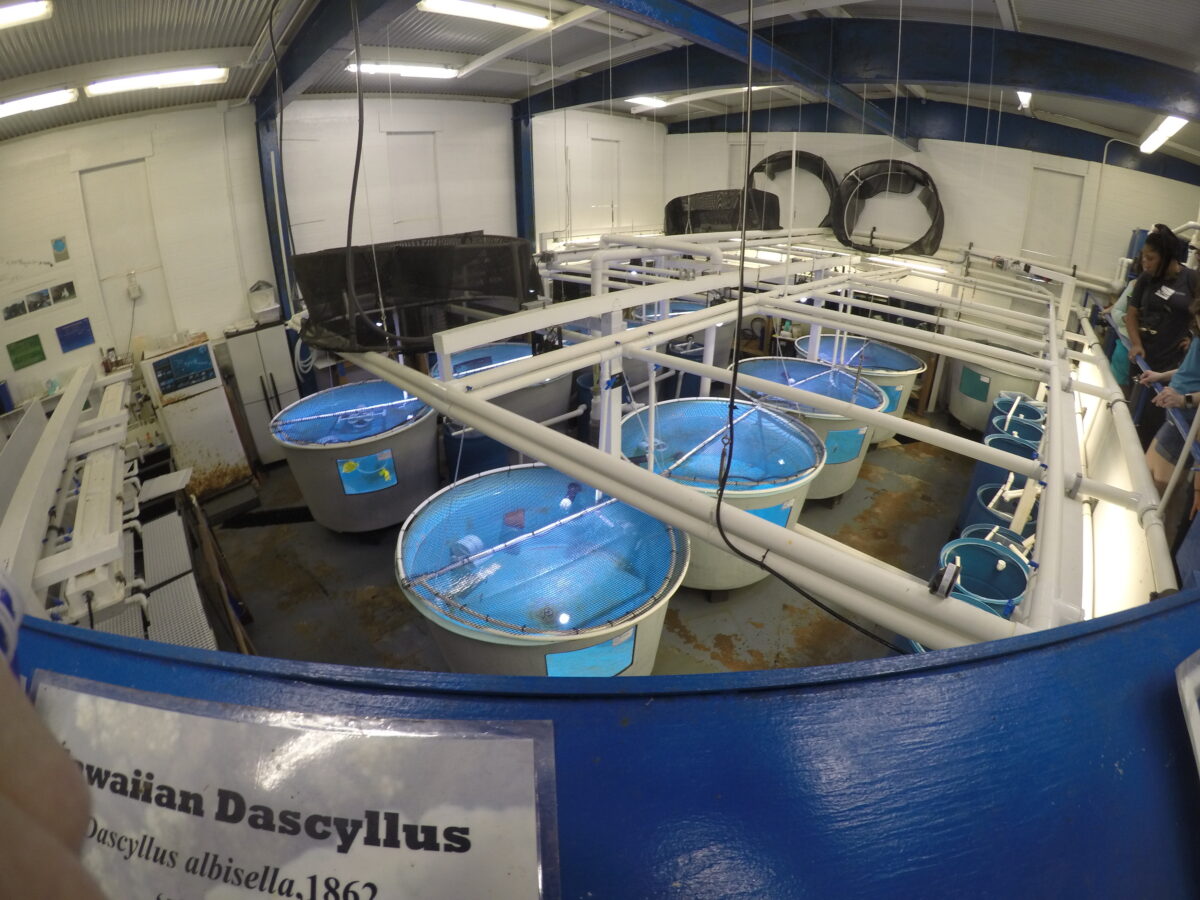
Pacific Aquaculture and Coastal Resources Center is paving the way for the cultivation of fish for aquariums. This is their lab space, with adults used for broodstock in the eight larger center tanks. Photo by Matt Thompson, New England Aquarium.
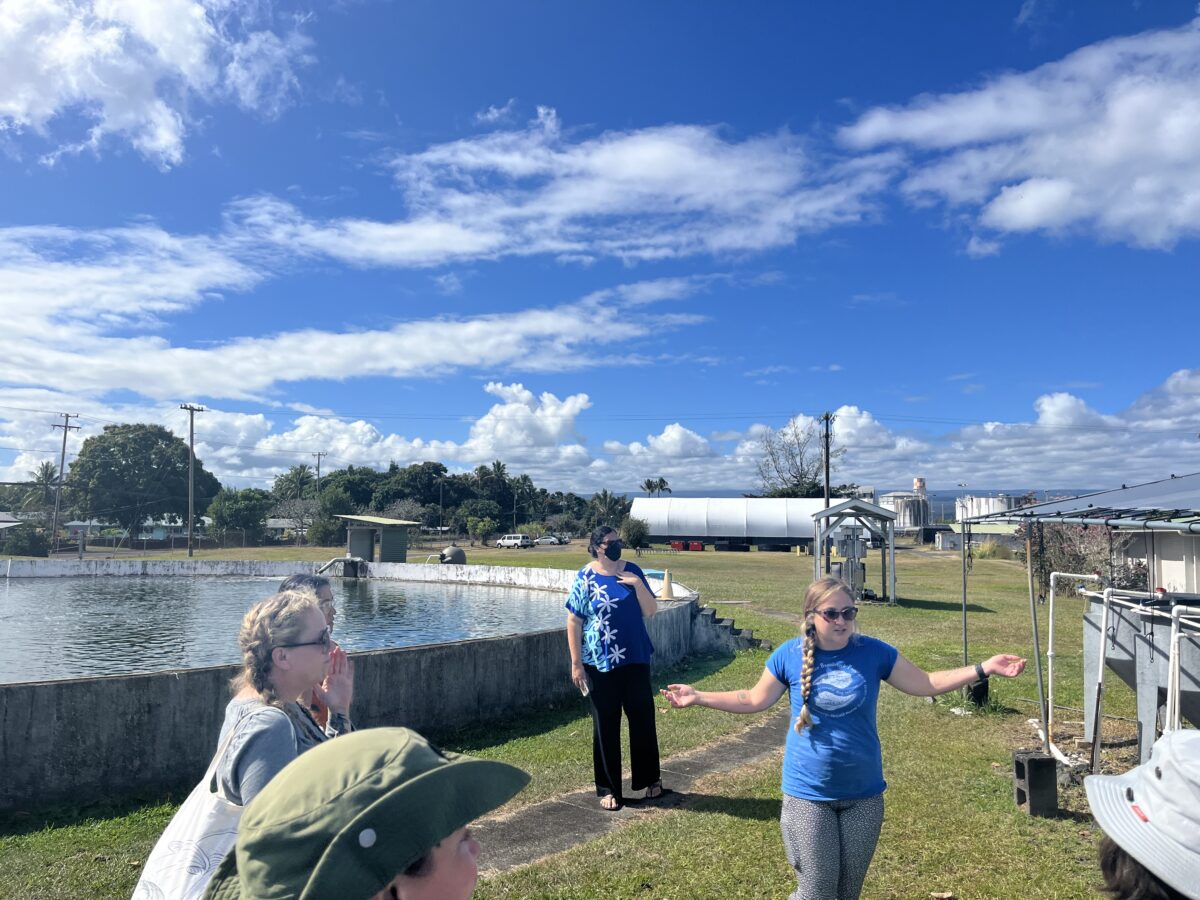
A Pacific Aquaculture and Coastal Resources Center student gives us a tour of the site, which used to be a wastewater treatment plant. The holding tank in the background holds one million gallons of seawater.
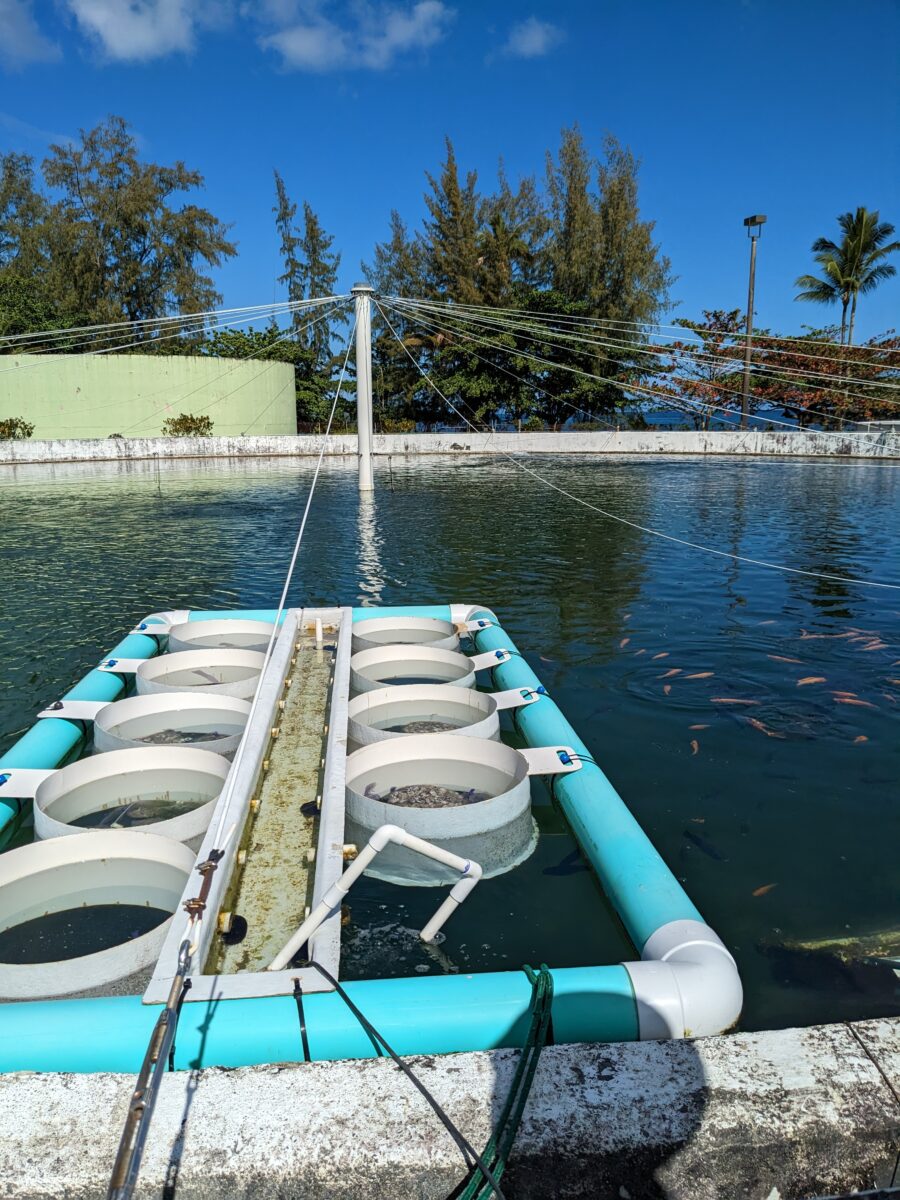
One of the projects in the holding tank is the development of a multitrophic system: the pond is stocked with tilapia and their waste provides nutrients needed to cultivate microalgae in the pond, which is eaten by millions of baby oysters.
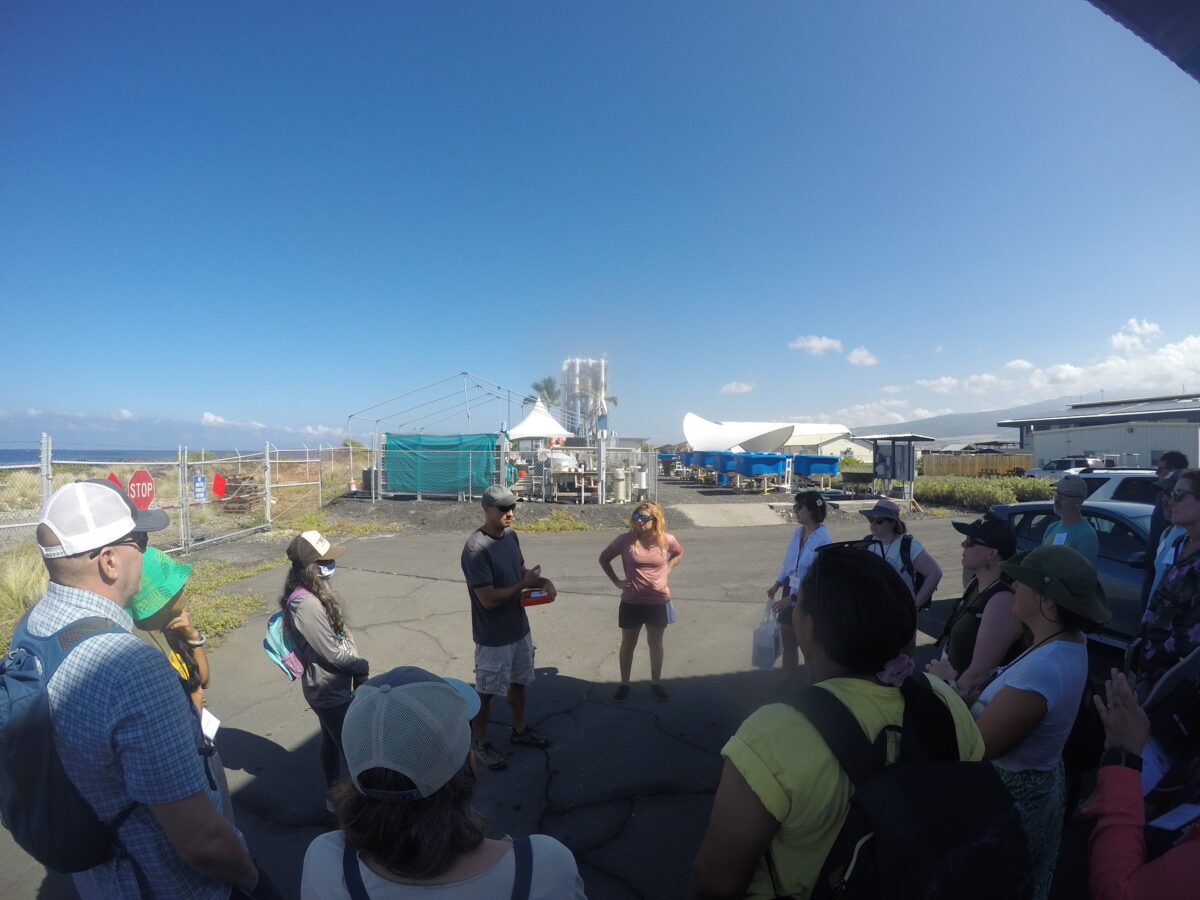
Much of the Natural Energy of Hawai’i Authority lab space is outdoors, taking advantage of the Hawaiian climate. In the background you can see tall white pipes, which are part of a unique system that delivers deep cold water and sea surface water to shoreside facilities. Matt Thompson, New England Aquarium.
These are EcoHarvest’s ornamental yellow tangs (plus one regal blue tang), grown in outdoor tanks at Natural Energy of Hawai’i Authority. When they are babies, the tangs cannot tolerate UV light and have to live in darkened tanks that protect them from the sun.

EcoHarvest grows microalgae outdoors under the hot Hawaiian sun to feed their farmed copepods, which are just the right size for tangs to eat. These metal cages hold pliable plastic tubes, similar to traditional shellfish hatcheries that grow phytoplankton.

While the majority of the trip was spent on land, learning about aquaculture, l did spend time underwater, meeting wild coastal manta rays during a magical night dive.
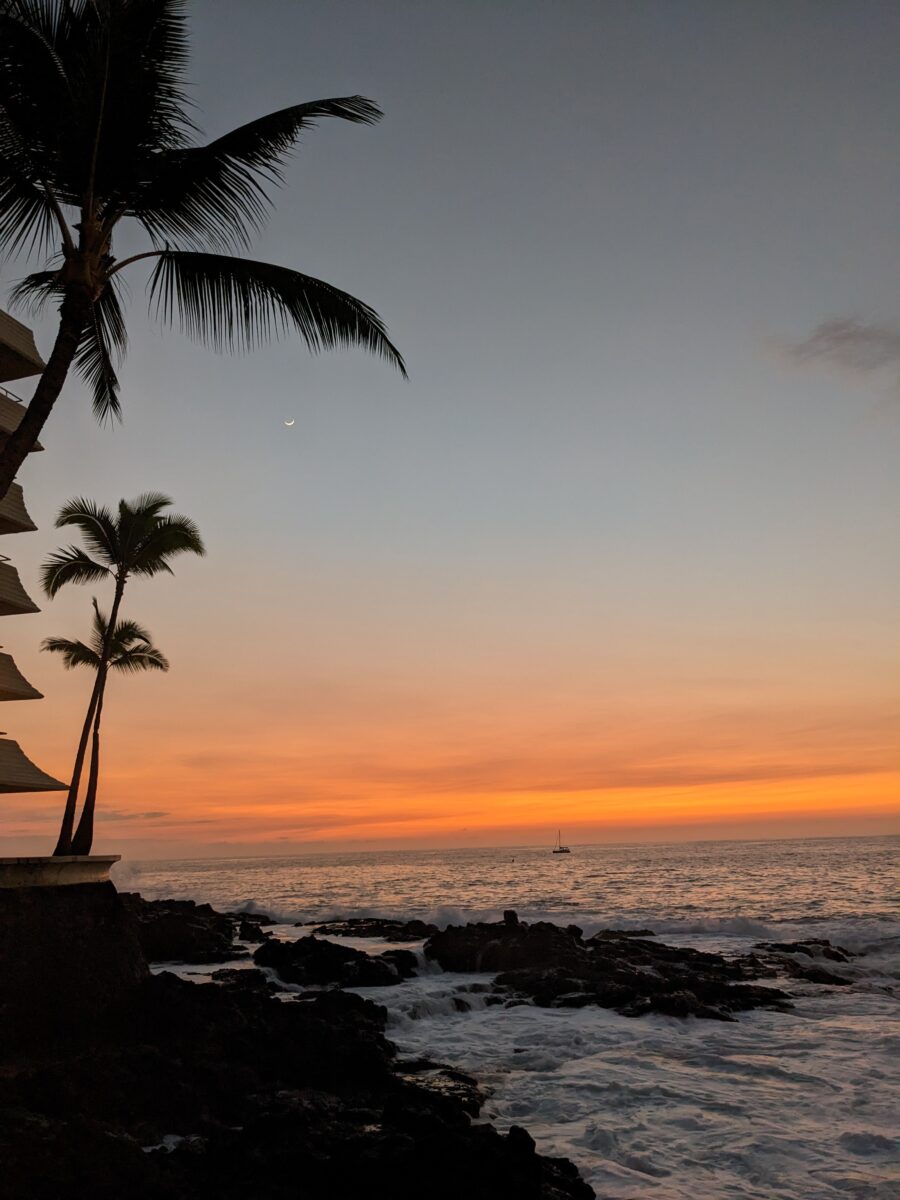
We have some important lessons to share. If aquaculture must happen, it should be done in a way that reflects the values of local communities. If I could mandate four requirements for the inevitable expansion of fish farming, they would be: 1. Communicate with the local community to plan farms and support working waterfronts. 2. Help and don’t compete with traditional uses and wild harvest fishing communities. 3. Be Green: Embrace technology and design that creates low environmental impact. 4. Model, Monitor, and Manage to ensure the farm is operating as permitted. We’re already doing it wrong in New England. The two offshore aquaculture farms going through federal permitting have not engaged stakeholders and have dubious plans. But they haven’t been permitted yet, so there is time for New England to get it right. If offshore aquaculture is inevitable, we must demand a better process, more communication, and high standards of accountability.
